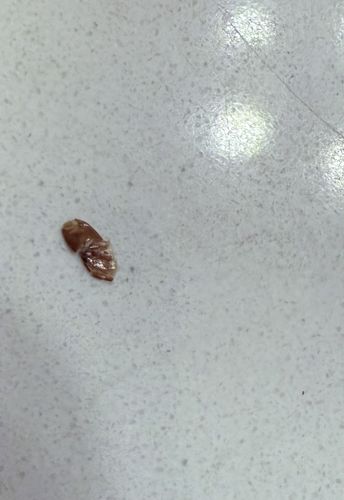Cockroach Ootheca (Egg Case)
Scientific Name: Various species depending on the specific cockroach type (e.g., Blattella germanica, Periplaneta americana, Blatta orientalis)
Order & Family: Blattodea (Order), various families including Blattidae and Ectobiidae
Size: Typically 5 mm to 12 mm (0.2 to 0.5 inches) in length, varying by species. The image appears to show an ootheca of a smaller cockroach species, possibly German cockroach.

Natural Habitat
Cockroach oothecae are found in warm, humid, and dark environments, often close to food and water sources. Common locations include kitchens, bathrooms, basements, wall voids, beneath sinks, behind refrigerators, inside cabinets, and in other sheltered indoor areas.
Diet & Feeding
The ootheca itself does not consume food; it is a protective casing for developing cockroach nymphs. The diet of the cockroaches that emerge from it is omnivorous, including starches, sweets, grease, meat products, decaying organic matter, and even non-food items like glue, soap, and book bindings.
Behavior Patterns
Cockroach egg cases are typically deposited in sheltered, hidden locations such as cracks, crevices, behind appliances, or in undisturbed areas. The female cockroach carries the ootheca for some time, depending on the species, before depositing it, or in some cases, the ootheca remains attached until the nymphs hatch. The development time for the nymphs inside varies with species and environmental conditions like temperature and humidity.
Risks & Benefits
Risks: Cockroaches and their oothecae are indicators of infestation. Cockroaches are pests that can contaminate food and surfaces with bacteria (e.g., E. coli, Salmonella), viruses, and parasitic worms. They can trigger allergies and asthma attacks due to their droppings, shed skins, and saliva. Their presence can also lead to an unpleasant odor. Benefits: From a broad ecological perspective, cockroaches contribute to the decomposition of organic matter in natural environments, but within human dwellings, their presence is almost entirely detrimental.
Identified on: 8/17/2025